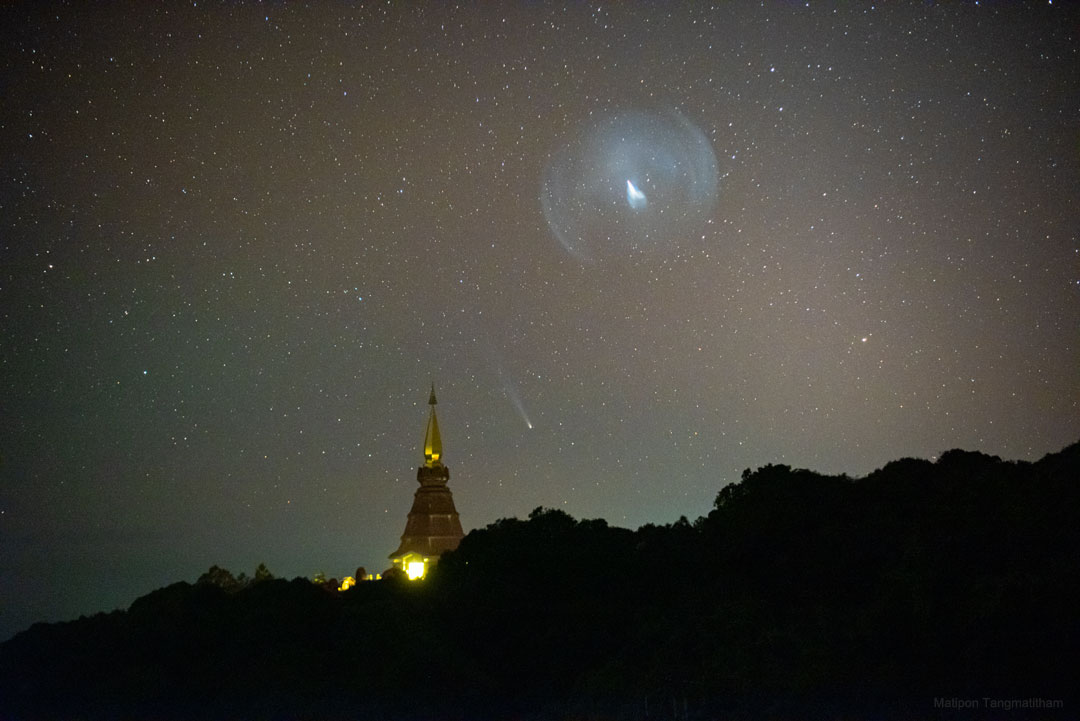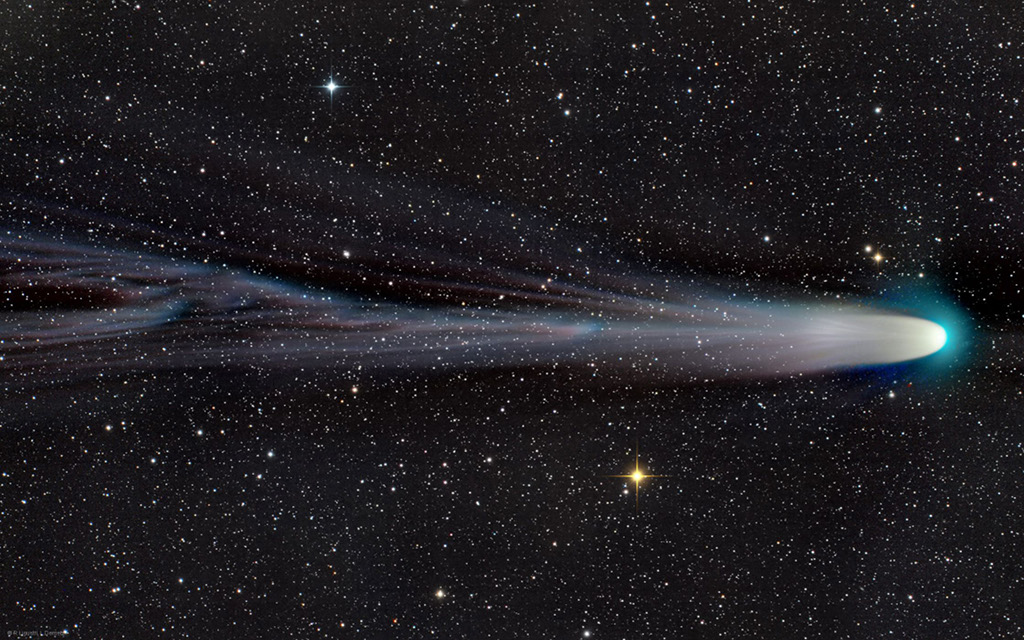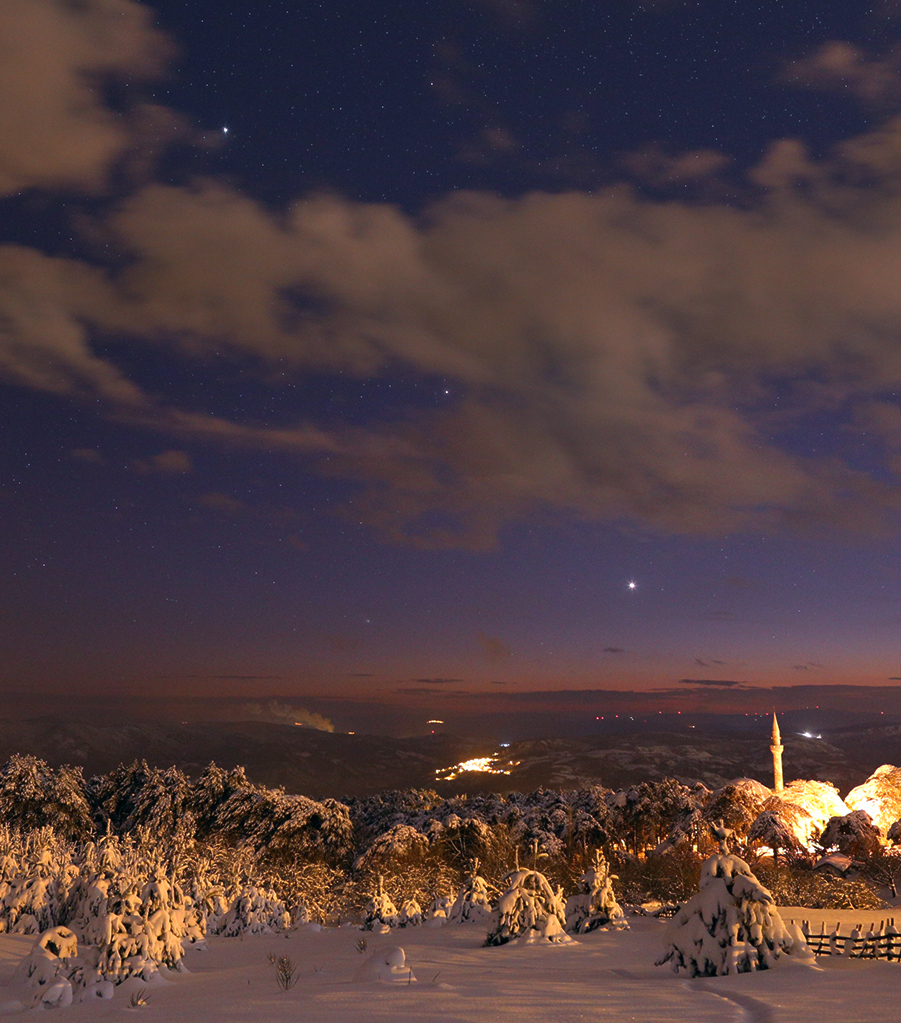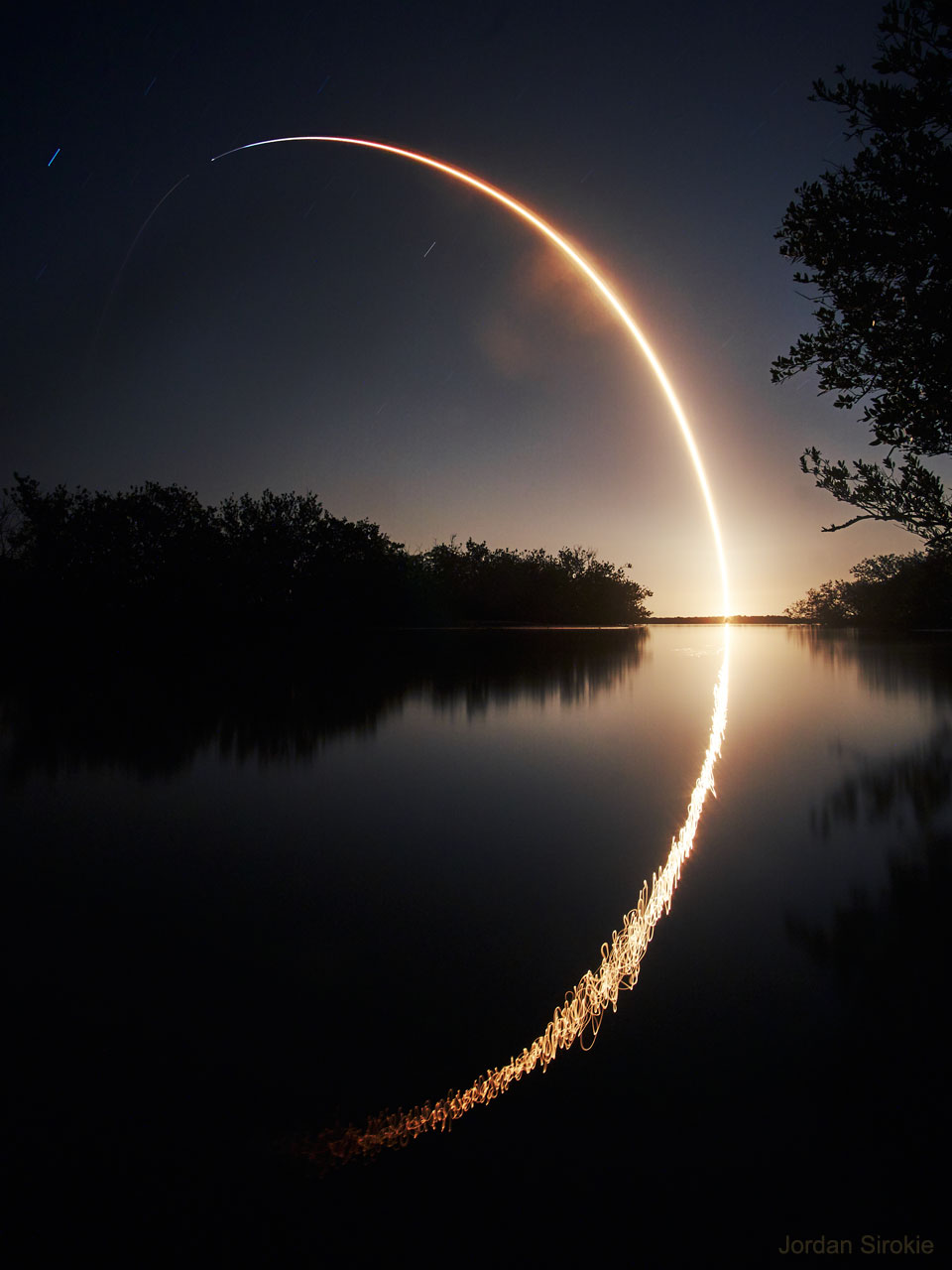Nombre total de pages vues
27/12/2021
MICROPHOTOGRAPHIE - Marek Mis - Un labyrinthe de formes géométriques
MUSIC - Elgar Nimrod - Daniel Barenboim & Chicago Symphony Orchestra - Enigma variations
ASTRONOMY - Comet Leonard behind JWST Launch Plume
2021 December 27
Image Credit & Copyright: Matipon Tangmatitham (NARIT)
Explanation: Which one of these two streaks is a comet? Although they both have comet-like features, the lower streak is the only real comet. This lower streak shows the coma and tail of Comet Leonard, a city-sized block of rocky ice that is passing through the inner Solar System as it continues its looping orbit around the Sun. Comet Leonard has recently passed its closest to both the Earth and Venus and will round the Sun next week. The comet, still visible to the unaided eye, has developed a long and changing tail in recent weeks. In contrast, the upper streak is the launch plume of the Ariane V rocket that lifted the James Webb Space Telescope (JWST) off the Earth two days ago. The featured single-exposure image was taken from Thailand, and the foreground spire is atop a pagoda in Doi Inthanon National Park. JWST, NASA's largest and most powerful space telescope so far, will orbit the Sun near the Earth-Sun L2 point and is scheduled to start science observations in the summer of 2022.
26/12/2021
MICROPHOTOGRAPHIE - Marek Mis - Alliance d’un médicament et d’un additif alimentaire
25/12/2021
MINERAUX - La crocoïte
ASTRONOMY - The Tail of a Christmas Comet
Image Credit & Copyright: Rolando Ligustri (CARA Project, CAST) and Lukas Demetz
Explanation: The tail of a comet streams across this three degree wide telescopic field of view captured under dark Namibian skies on December 21. In outburst only a few days ago and just reaching naked eye visibility Comet Leonard (C/2021 A1) is this year's brightest comet. Binoculars will make the diffuse comet easier to spot though, close to the western horizon after sunset. Details revealed in the sharp image show the comet's coma with a greenish tinge, and follow the interaction of the comet's ion tail with magnetic fields in the solar wind. After passing closest to Earth on December 12 and Venus on December 18, Comet Leonard is heading toward perihelion, its closest approach to the Sun on January 3rd. Appearing in late December's beautiful evening skies Comet Leonard has also become known as 2021's Christmas Comet.
AERONAUTIQUE - Avions de légende - Le Boeing B-29 Superfortress

23/12/2021
ASTRONOMY - Three Planets and a Comet
2021 December 23
Image Credit & Copyright: Tunc Tezel (TWAN)
Explanation: Are you still looking for that perfect holiday gift for an astronomer? If your night sky is dark and horizon clear enough, the Solar System may have done your shopping for you. Send them outside after sunset to see three planets and a comet. In this snapshot of the December solstice evening sky from the village of Kirazli, Turkey the brightest celestial beacon is Venus, close to the southwestern horizon at the right. Look left and up to find Saturn shining between clouds. Follow that line farther left and up to bright Jupiter, the Solar System's ruling gas giant. This year's surprise visitor to the inner Solar System, Comet Leonard (C/2021 A1), is near the horizon too. The comet is fainter but forms a nearly equilateral triangle with planets Venus and Saturn in this view. After a dramatic brightening in recent days the comet is just visible to the unaided eye, though a nice pair of binoculars is always a good idea.
22/12/2021
ASTRONOMY - Launch of the IXPE Observatory
2021 December 22
Image Credit & Copyright: Jordan Sirokie
Explanation: Birds don't fly this high. Airplanes don't go this fast. The Statue of Liberty weighs less. No species other than human can even comprehend what is going on, nor could any human just a millennium ago. The launch of a rocket bound for space is an event that inspires awe and challenges description. Pictured here, a SpaceX Falcon 9 rocket lifted off from Kennedy Space Center, Florida earlier this month carrying the Imaging X-ray Polarimetry Explorer (IXPE). IXPE is scheduled to observe high-energy objects such as neutron stars, black holes, and the centers of distant galaxies to better determine the physics and geometries that create and control them. From a standing start, the 300,000+ kilogram rocket ship lifted IXPE up to circle the Earth, where the outside air is too thin to breathe. Rockets bound for space are now launched from somewhere on Earth every few days.
ASTRONOMY - Comet Lemmon's Wandering Tail
2025 November 17 Comet Lemmon's Wandering Tail Image Credit: Ignacio Fernández Explanation: What has happened to Comet Lemmon's ta...

-
2022 September 26 All the Water on Planet Earth Illustration Credit: Jack Cook, Adam Nieman, Woods Hole Oceanographic Institution ; Data ...
-
2025 May 11 The Surface of Venus from Venera 14 Image Credit: Soviet Planetary Exploration Program , Venera 14 ; Processing & Copyri...







